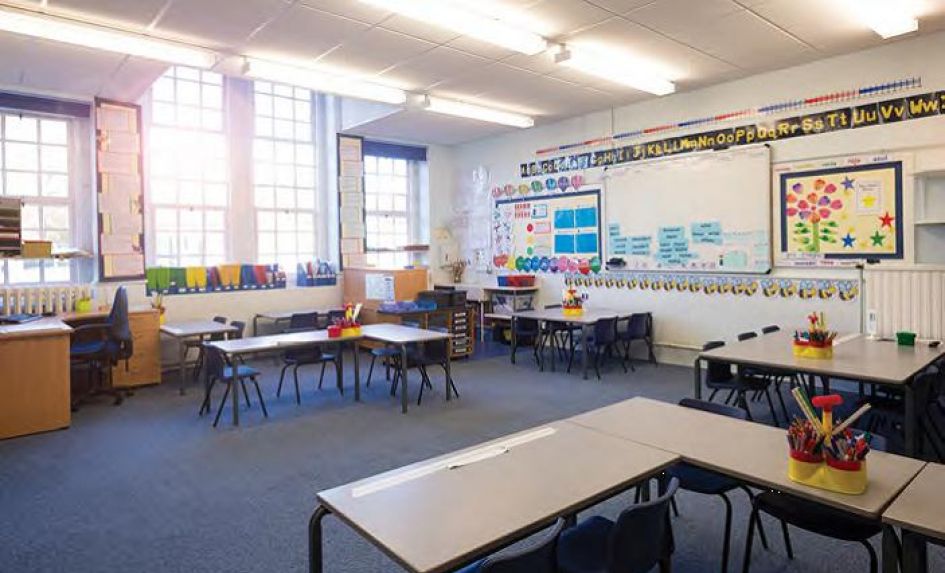There’s no one-size-fits-all solution to creating the ideal learning environment, but there is a surprisingly simple measure that’s been proven to prompt significant improvements in students’ classroom performance.
Full spectrum daylight – be it naturally sourced or mimicked in brightness and temperature via a particular lighting solution – has been found to improve behaviour, boost health and reduce anxiety in students, all of which contribute to a positive learning experience.
These findings have been verified by a study from the California Energy Commission, which saw students achieve a 20% improvement in mathematics and 26% in reading when they worked in classrooms flooded with high levels of daylight.
Prior research by the University of Nevada suggests that poor lighting can affect how the brain collects information. The cool, white fluorescent tubes traditionally found in schools can be detrimental to learning and prompt students to fidget, talk and daydream in lessons. The harsh brightness they create has also been linked to hyperactivity among students.
Replacing fluorescent tubes in classrooms with full spectrum lighting is a simple, yet effective measure that can make an instant difference to the learning environment. The positive effects of natural light can be further capitalised upon by implementing dynamic lighting – a system that allows lighting temperature and brightness to be adjusted on a light-by-light basis via a tablet or smartphone.
This enhanced level of control enables teachers to adjust the ambience of the room to suit particular lessons or activities. If students are required to work from a white board, for example, the room’s brightness can be set to minimise reflections and improve visibility. This reduces the risk of students disengaging with the task at hand, due to an inability to read what’s on the whiteboard.
Settings can also be adapted to suit the ‘mood’ of the subject being taught. While lower light is conducive to creative thinking, brighter task lighting can assist with more detailed work, such as scientific experiments.
With the increasingly strict targets being faced by both students and teaching staff comes a huge responsibility to ensure the learning environment, and therefore students’ concentration, is optimised. Addressing the quality of lighting in classrooms is one way in which schools can bring about vast improvements in the comfort and performance of students and staff alike. In turn, this will translate to more engaged learning, which could ultimately manifest in better exam results.
Bruce Cantrill is head of marketing and business development at CMD – a manufacturer and supplier of power and lighting solutions for a range of applications. Find out more at cmd-ltd.com and on Twitter at @cmdltd.









